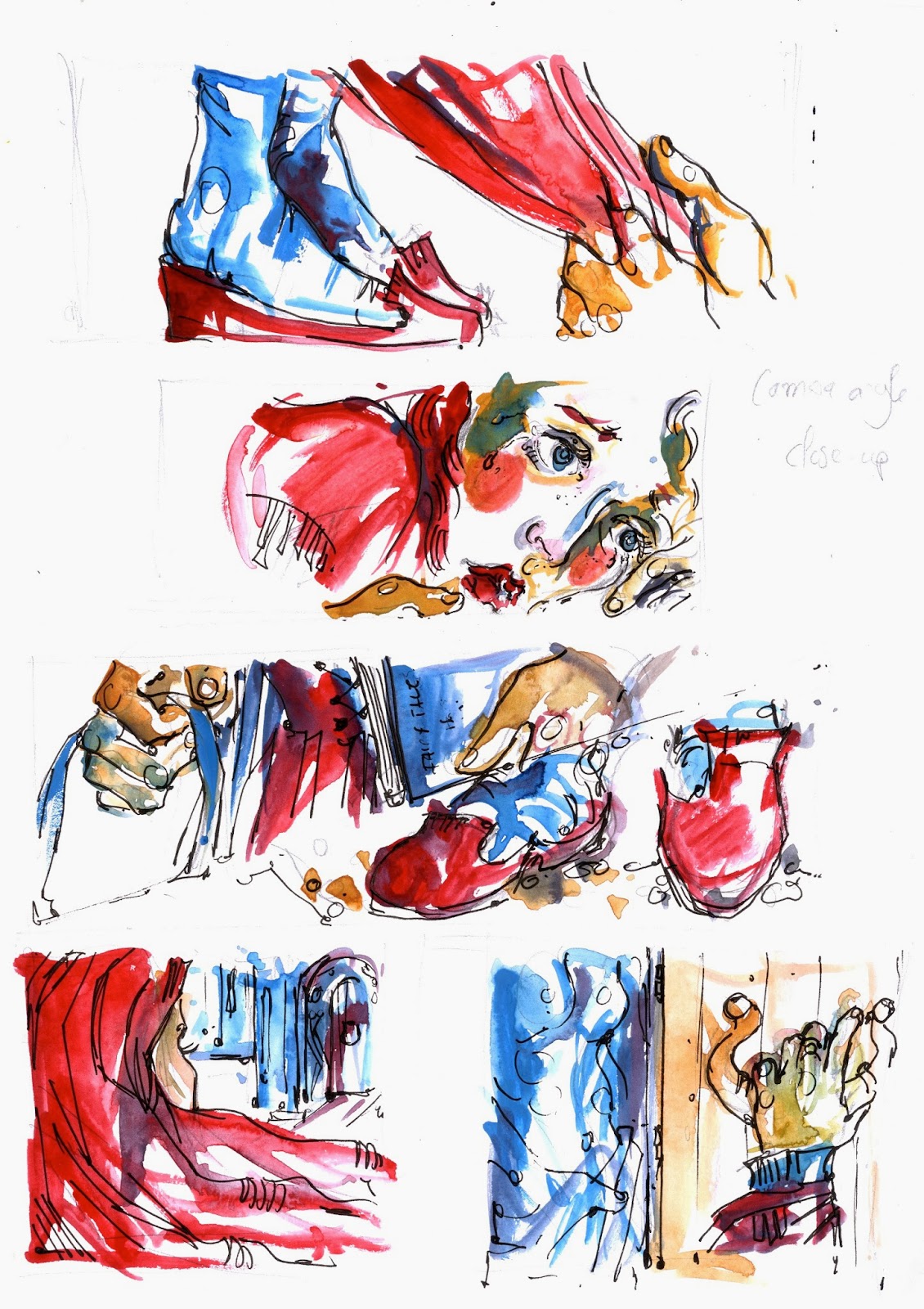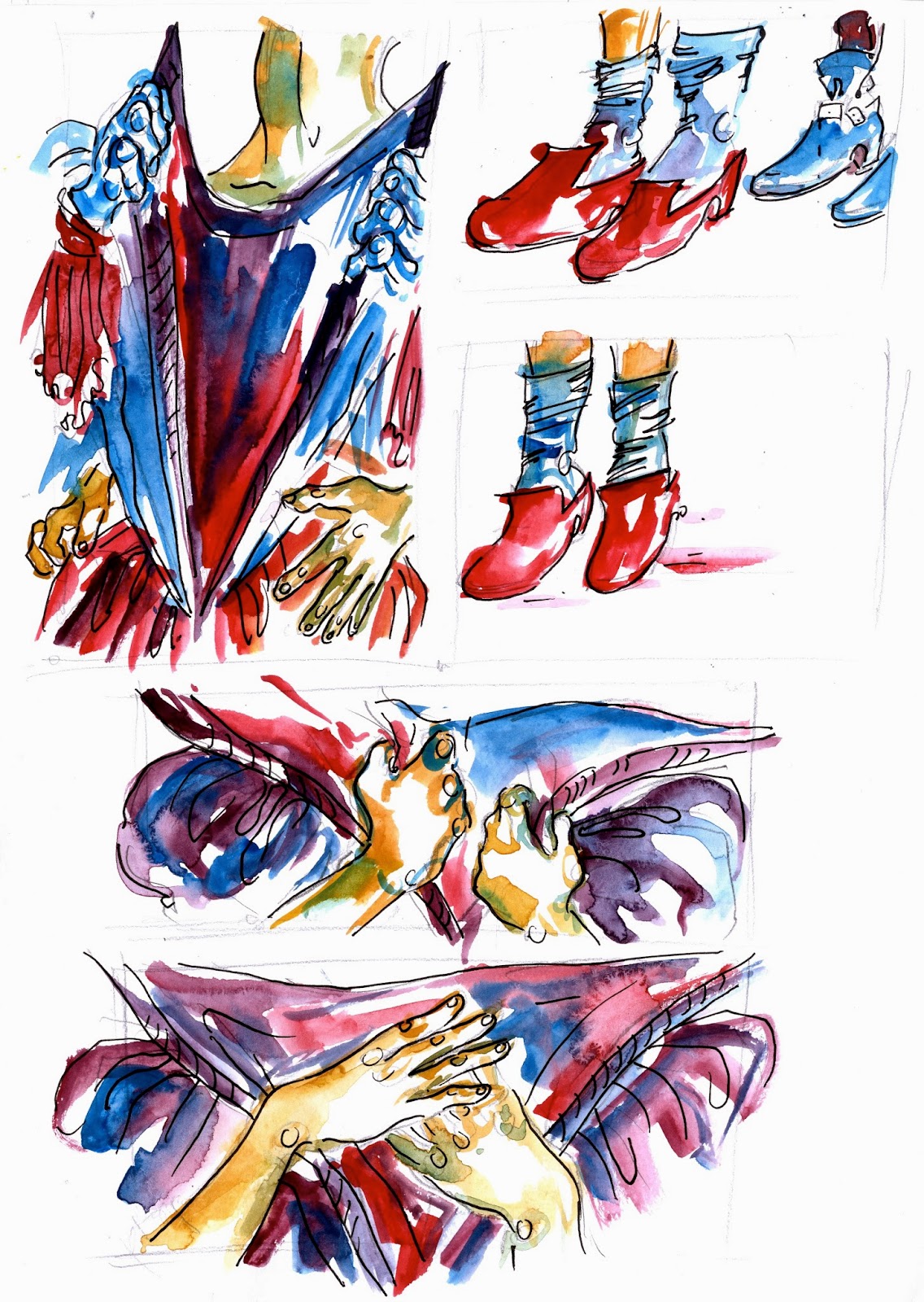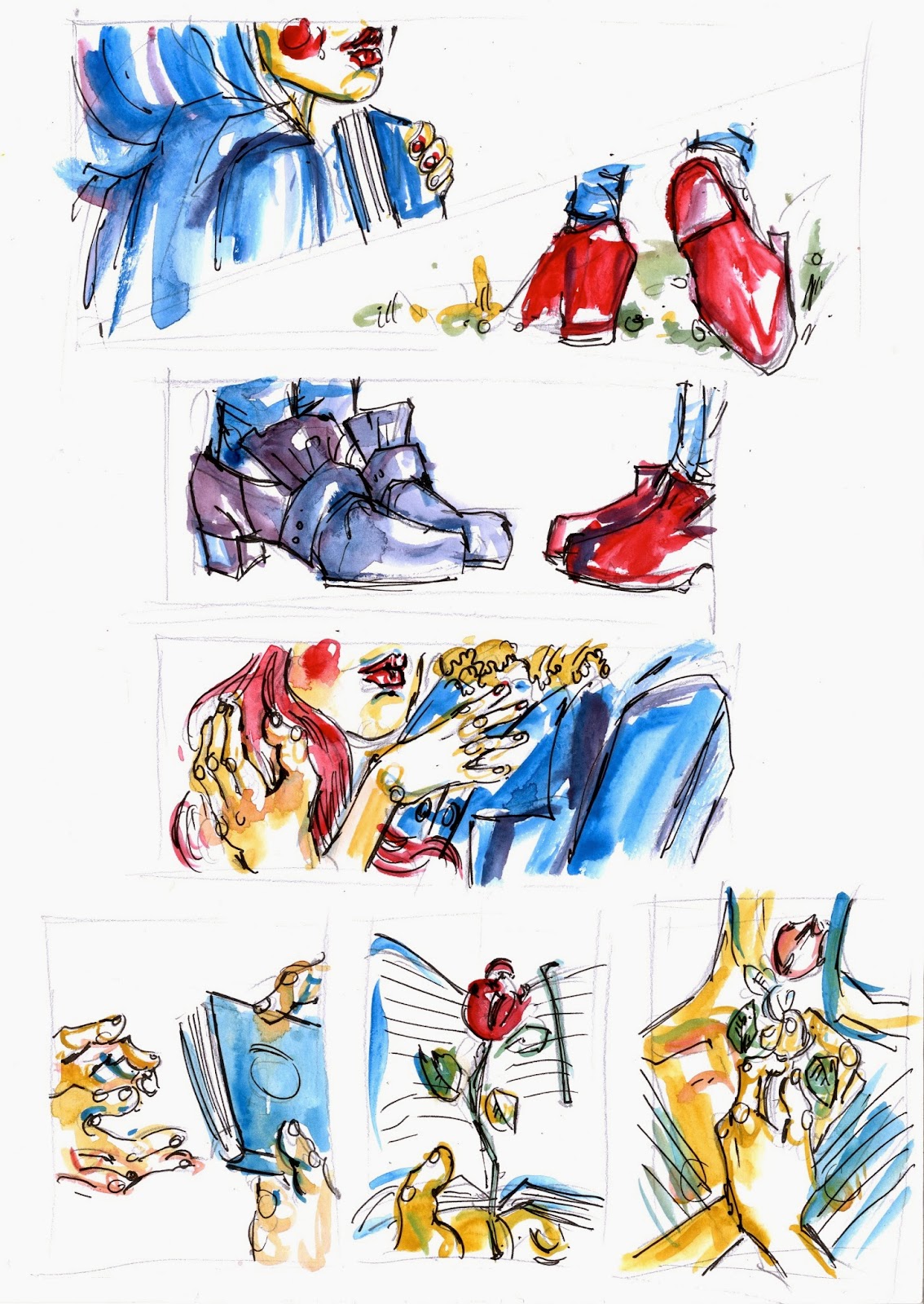For Further research into this topic see
http://torupsonfmp.blogspot.co.uk/p/research-duplicate-from.html
JoJo's Bizarre Adventure:
A Manga series that spans several generation's of one one family with English roots. About their misadventures.
Extremely useful in terms of influencing my story-telling techniques. This comic book series is very suggestive, but only implied, and this is done through clever imagery. The use of hands to tell the story is something that I have thought about whilst creating the storyboards for my comic book. It allows for emotions to be implied and also suggests a proximity. Smaller, broken up panels do this also, forcing the characters into a smaller space and showing an intimacy. You can see above how hands have been used in an almost tender gesture and they moves closer together as the scene progresses, leading up to a penultimate image.
The use of facial expression in his work and the cutting together or panels; a montage of compositions, angles showing the scene from different points of view. The Illustrator clearly communicates what the characters are thinking, sometimes only showing half of a face, a section of an expression yet it is still enough to tell the story.
HAND AND FEET:
Using hands and feet to communicate narrative was taking a leap on my part. They are notably the elements of the figure that Illustrators avoid, two of the hardest things to draw and I have chosen them as the imagery that will fuel my story. However, I feel that this is an original idea and something that I can challenge myself with, so I want to move forward with this. I have never been scared of drawing hands or feet, especially as I have always felt gesture and expression is not to be ignored in a figurative work, if you want to better communicate personality. Touch is very important and hands not only show a proximity they can imply emotion. A clenched fist for anger or a possessive nature, stiff, spread fingers for surprise. They also show an intimacy, as hand holding or a clear need for touch is associated with love or affection. All of these things can be used to push my story forward, imply and suggest the things that 'might' be occurring outside of the frame and therefore, better suiting my communications objectives in terms of making a story that adults will appreciate, giving fairy-tales a modern significance and bringing to light their controversy.
There was more than one reason why I felt feet would also work to further the narrative.For similar reasons to using 'hands' they show a proximity and can also imply tentativeness, hesitancy etc. Lack of shoes and socks shows when a character is comfortable or relaxed, or even their situation, the time of day (slippers or shoes), where they happen to be, where their feet are taking them. In addition, however, they also show time lapse, different shoes constitute different seasons, worn shoes show the passing of time and contrasting grandeur the stations or situations of characters
The image above is taken from the first few pages of my new storyboards. The raised heel on the woman's left foot shows how uncomfortable she is with the proximity. This is a gesture that is repeated until later in the story, when she looses her inhibitions. along with her shoes and stockings. An implication of her new-found comfort, with the Beast as man and not a monster.

Similarly this image is taken from the scene at the beginning of the story, when the Beast drags her up the stairs to her new room in his castle. The scene that follows is slightly suggestive, the shoes above a testament to that. However, as the scene progresses you find that he was in fact giving her a dress and left her promptly. I deliberately threw the audience off her, at this point they wonder if they were imagining the 'undertones' , when in fact it just continues from this point. The Beasts grip on her wrist was an important metaphor for me; he does not take her hands because he does not feel an affection for as yet, he is simply wanting to frighten her. The next image is more interesting, he has no grip on her hand and yet she follows him up the stairs. I see this a an implication of her curiosity, she is probably too frightened to run but she cannot help but follow him.

An example of 'the seduction scene' which is supposed to represent a period of time (also shown through changing costume- until the end panel where there is no costume..). This will be drawn in more detail paying closer attention to the expression on the left panel. Here we see through the use of hands, how a one sided seduction becomes mutual, I liked the idea of 'entanglement' and this the image of her hands twined with his became the 'iconography' of the piece and most likely will be the significant front cover image.'

At this point in the story, the Beauty has just been seduced by the Beast. For the story to progress I had to show the development of true feelings between the characters; for the Beast would not let her home in in her homesickness if this were not the case. His hands are more relaxed and gentle and in this scene , we see her discard her book in favour of him. This suggests that she has found the adventure she was looking for! A massive contrast to the way she clutched her book previously to hang to her dreams and perhaps herself and her sanity, to readily allowing the book to be pushed carelessly to the floor.
THE END: TABLES TURNED
There was debate about the end of the story. I was unsure whether the Beauty should remain at home and the final image would be her imagining his hands. However, in the original story of Beauty and the Beast she had to return to him or he would die (at this point he turns into a Prince). I felt that to fully communicate my objectives she should return to him and he should remain a Beast; this we see that she is the one to alter for him as opposed to him altering to suit her. The end of the story is shows how the tables have turned. Throughout the story the Beast was sneaking up on her, giving her no way out, in this scene, we see her seducing him, they almost switch roles and we see understand that it her turn to prove her loyalty. At the beginning of the scene he is turned away from her, at the end of the story we go back to that idea of entanglement (limbs included this time). The shoes and socks are gone at the end., as is her book, a metaphor for how she is no longer the person she was before she went to the dark castle.



































